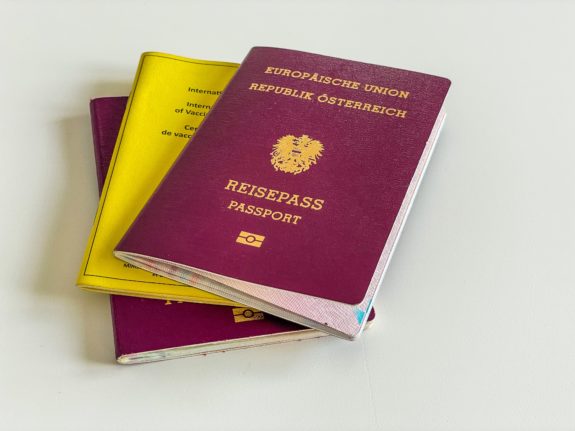For many people applying for Austrian citizenship, there are many reasons for not wanting to give up their current citizenship. Yet, chances are high that an Austrian passport is more powerful than any others they might have unless you are from a handful of other EU/EEA countries or Japan, Singapore or South Korea.
Several indices, including two out just recently, focus on travel freedom. That is, how many countries can you visit on that passport without a visa – or with a simplified process which you can get after landing.
READ ALSO: ANALYSIS: Could Austria ever change the rules to allow dual citizenship?
The Henley Passport Index, which has recently released its 2023 ranking, puts the Austrian passport in the top five of the most powerful travel documents in the world. Austria is among the some of the most powerful passports in Europe, as Austrian citizens can travel to 188 countries or territories where they either don’t need a visa or get one on arrival.
Internationally, only the passports of Luxembourg, Italy, Finland, Spain, Germany, South Korea, Singapore and Japan score higher than Austria. Japanese citizens can travel to 193 countries or territories without a visa.
Other indices also measure travel freedom, although each calculates it slightly differently, explaining some of the different rankings. Some place more weight on whether you can travel entirely visa-free for another country, while others treat being able to travel somewhere completely without a visa and getting a visa on arrival as more or less the same thing.
READ ALSO: How foreigners can get fast-track citizenship in Austria
Second most powerful?
In a separate ranking, the 2023 Passport Index Austria lands in second place along with Sweden, Germany, Finland, Luxembourg, Spain, France, Italy, Netherlands, Switzerland and South Korea. They are behind the United Arab Emirates (UAE) which takes the top spot.
Although Austrians can travel to a few more countries visa-free than UAE citizens, the UAE passport allows entry to a lot more countries through a visa on arrival than an Austrian one does – which is why the index ranks it higher.
Meanwhile, the Guide Consultants Index also factors where certain passport holders might need an electronic travel authorisation (eTA) rather than just a visa or not to travel to a specific country. By this measure, they rank Austria fifth, tied with Portugal, the UK, New Zealand, and Ireland. Singapore ranks first.
READ ALSO: Austrian citizenship: Do you really have to renounce your original nationality?
According to this index, Austrians can travel to 143 destinations without a visa. However, they need a visa on arrival for 33 destinations. For 15, they can get a visa online, and for 13, they just need to apply for an eTA online in advance. Austrians must apply for a travel visa in advance from only 25 countries.
What about EU Freedom of Movement?
Current rankings focus on the travel freedoms associated with a particular passport. Although each measure travel freedom slightly differently, an Austrian passport always does well.
However, none consider the European Union freedom of movement that an Austrian passport grants. In addition to travelling, Austrians can live and work in the EU’s other 26 member states without a visa.
Through EU treaties, this right also exists with countries in the European Economic Area or European Free Trade Association, like Norway, Iceland, Switzerland, and Liechtenstein.



 Please whitelist us to continue reading.
Please whitelist us to continue reading.
Member comments